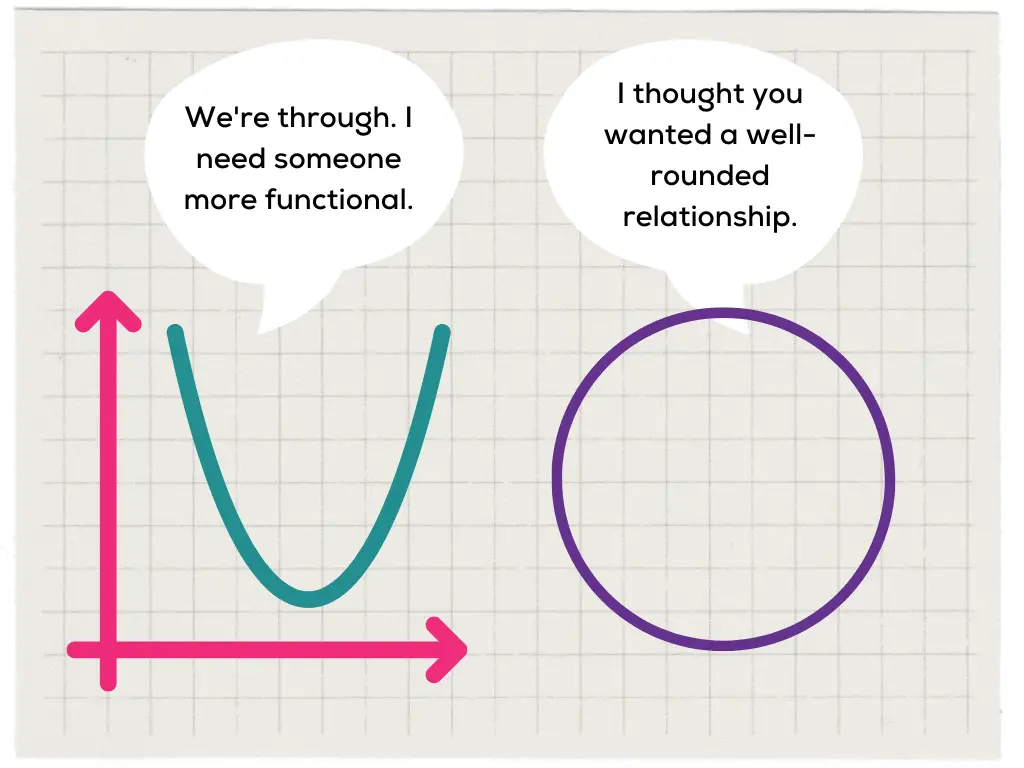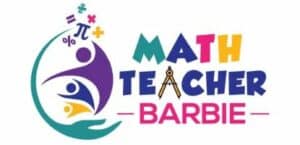
Functions are a big deal in algebra. The ideas they generate continue to influence how we think about mathematics beyond algebra as well. Conceptually, they are one of the most frequently misunderstood concepts.
A function in mathematics is a relationship between two or more variables that is reliable and predictable: whenever the starting point (input) is the same, the ending point (output) will also be the same, no matter who applies the rules of the relationship or when they apply those rules.
Many textbooks say this as “each input has at most one output.” Functions can have more than one input variable; these are sometimes called multivariable functions or vector-valued functions. No matter how many inputs a function has, we would say that “[output] is a function of [input(s)].” For example, the distance you travel is a function of both how fast you go and the time you spend going. However, if you are reading this article, you are probably learning about functions in algebra where $y$ is a function of $x$. In these cases, $y$ is the generic variable name we use to mean “output” and $x$ is the generic variable name we use to mean “input.” Most of the time we talk about $x$s and $y$s, these are the meanings of each variable.
In order to understand functions in $x$ and $y$ better, let’s look at a few counter-examples, why in each case $y$ is not a function of $x$, and in some cases how we might be able to think of them differently to be able to use a function relationship.
This post was originally published on mathteacherbarbie.com. If you are reading it elsewhere, you are reading a stolen version.
Vertical lines are not functions of $x$
Picture any vertical line on the coordinate plane. (A vertical line is the one that goes straight up and down, like the vertical face of a cliff.) In this relation, there is only ever one input, and that one input can go to any possible real-number output. (Assuming we use the usual $x$ as inputs and $y$ as outputs.) Therefore, it is neither reliable nor predictable which output we would get with that input.
For example, in the line above, you see that an input of 2 can give a wide variety of outputs (such as $-2$, $0$, and even $pi$). In fact, there are infinitely many outputs that 2 could yield! (You can play and explore other vertical lines by clicking on the graph.)
If you want a brain stretch, consider this: if we switched the roles of $x$ and $y$, $y$ would become the input variable and $x$ would become the output variable. In this unusual scenario, we could say that “$x$ is a function of $y$! (And in this odd, inverse universe, suddenly horizontal lines become non-functions!)
Sideways parabolas are not functions of $x$
You may be familiar with the shape called a parabola. If you rotate a parabola 90 degrees, so it looks like it’s laying on its side, this is no longer a function of $x$. In a lot of ways, this is similar to the line function above:
- It’s not a function because most of its inputs have more than one output
- If we switch the roles of $x$ and $y$, then it could be said that $x$ is a function of $y$ in this inverse universe.
Another tweak that allows us to use these as functions of $x$ (the “normal” way we think about inputs, outputs, and functions) is to leave off half of the graph, and use, say, the top half only. This is the equivalent of using only the positive square root, $\sqrt{x}$, instead of both square roots, $-\sqrt{x}$ and $\sqrt{x}$.
Circles and ellipses are not functions of $x$
If you plot a circle or ellipse on an $xy$-coordinate plane, it will not be a function of $x$. This is for the same reason as before: most of its inputs have more than one output. However, this time, even if we did switch $x$ and $y$, it still would not be a function of $y$. In the case of circles and ellipses, if we want to discuss these as functions, we either have to limit them to only the top half or the bottom half, or we can add a third variable, such as time, into the mix.
Though whole circles and ellipses are never functions using only the traditional $x$ and $y$ variables, we could use function tools to analyze it by introducing a third variable, such as $t$, and writing each coordinate as a parametric function of that third variable. This is a more advanced topic that a few students see during their algebra instruction, but many don’t see until later in the calculus sequence.
Any relation that has one $x$ value going to multiple $y$ values is not a function of $x$
These last two are simply generalizations of the rule of what makes a function a function. Did you notice that, of the last three examples, none of them were functions, and all because there was at least one input $x$ that showed up with two different output $y$s. Any time this happens for any relationship between two variables, that relation is not a function.
Any $xy$-coordinate graph that fails the Vertical Line Test is not a function of $x$
The graph interpretation of having multiple output $y$s for any input $x$ is that, if you drew a vertical line at that $x$, it would pass through the graph more than once. This is exactly what will happen anywhere that there are multiple outputs for an input in the traditional $xy$-coordinate plane. When this does happen anywhere in a graph, we say that the graph fails the Vertical Line Test and that the relationship the graph represents is not a function.
To learn more about what makes some relations into functions, check out Formulas, Expressions, Relations, and Functions: What’s the Difference? And remember…
You’ve Got This!
Use of Desmos Tools in embedded graphs is used with permission from Desmos Studio, PBC.
